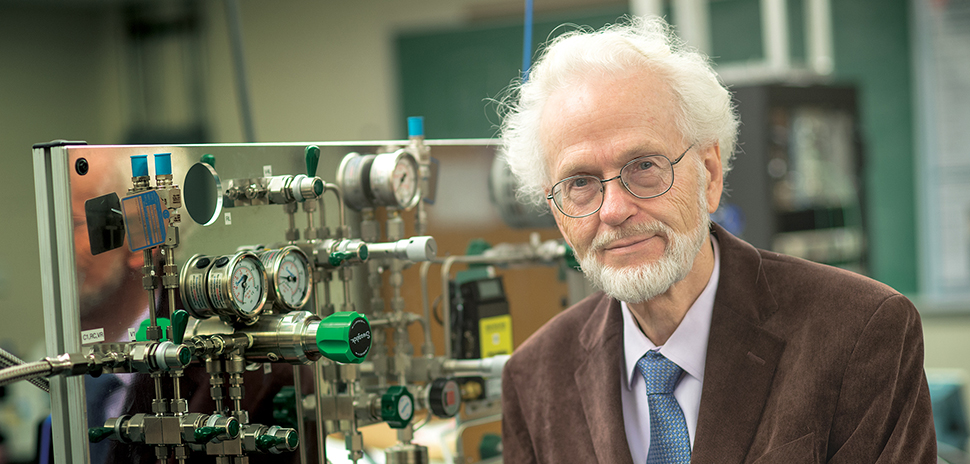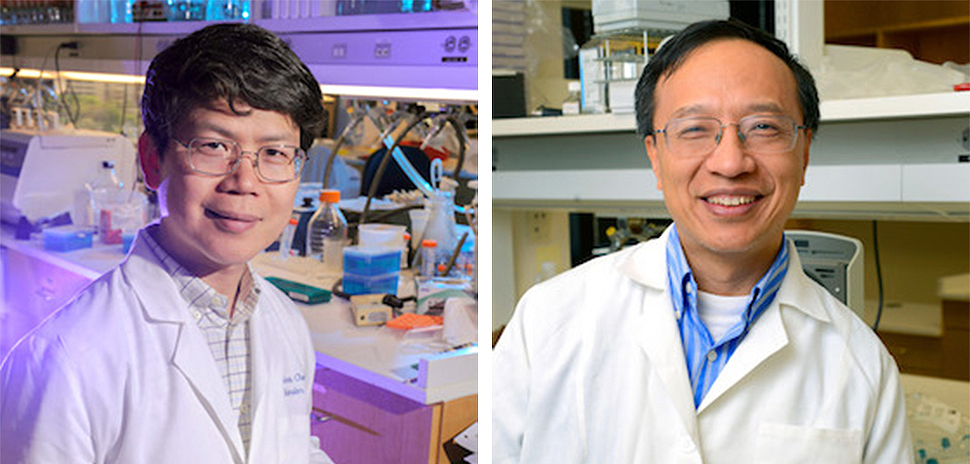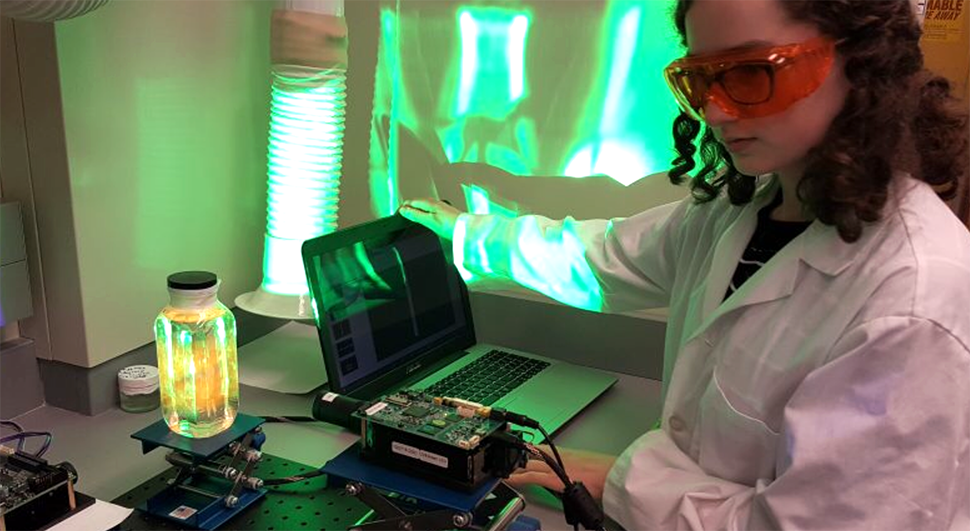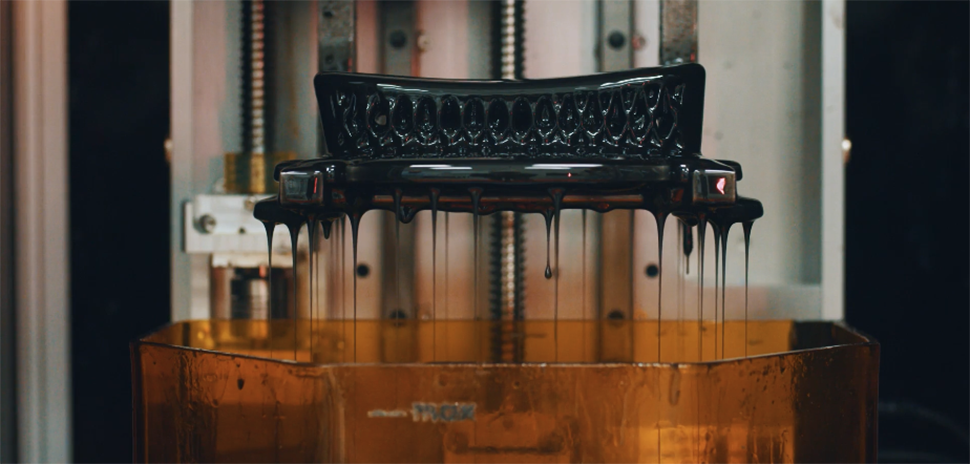SMU CHEMIST BRINGS LIGHT TO LIFE WITH 3D STRUCTURES
Do you remember the 3D projections in the 1977 film, Star Wars?
Those images have inspired Southern Methodist University chemist Alexander Lippert to help create new technology which makes 3D tabletop objects by structuring light using photoswitch molecules. The result yields 3D light structures viewable from 360 degrees.
“It’s not a hologram, it’s really three-dimensionally structured light.”
Alexander Lippert
“It’s not a hologram, it’s really three-dimensionally structured light,” said Lippert, an assistant professor in the SMU Department of Chemistry.
There are a variety of uses for the method that shapes light into an infinite number of volumetric objects — from biomedical imaging, education, and engineering, to television, movies, and video games.
The university said the key is a molecule that switches between fluorescent and non-fluorescent in reaction to either the presence or absence of ultraviolet light.
To find out more about this research, visit the SMU Research website.

David Nygren is presidential distinguished professor of physics at UTA. [Photo: University of Texas at Arlington]
UTA PROFESSOR WINS PRESTIGIOUS CURIE AWARD
The Institute of Electrical and Electronics Engineers has named a professor at the University of Texas at Arlington the winner of the 2018 Marie Sklodowska-Curie Award.
David Nygren, presidential distinguished professor of physics at UTA is the recipient of the prestigious international award that recognizes outstanding contributions to the field of nuclear and plasma physics and engineering, the university said in a release.
“Madame Curie is a hero in physics and to the world for her pioneering discoveries of radioactive elements and their properties.”
David Nygren
“Madame Curie is a hero in physics and to the world for her pioneering discoveries of radioactive elements and their properties,” Nygren said in the release. “I am equally humbled to be recognized as contributing a small part to her legacy, in the pursuit of deeply fundamental knowledge.”
In 1974, Nygren invented a new particle detection concept, the Time Projection Chamber, which enabled accurate and complete capture of very complex high-energy particle collisions.
Those collisions can lead to the production of hundreds, perhaps thousands, of new particles.
The chamber has been used worldwide for more than four decades in particle detection and discovery, ranging from relativistic heavy ion collisions to the search for Dark Matter, and extremely rare nuclear decays, according to the university.

From left, Drs. Zhijian “James” Chen and Yang-Xin Fu. [Photos: UT Southwestern Medical Center]
UTSW DISCOVERY COULD IMPROVE ANTI-CANCER TREATMENT
A discovery by researchers at the UT Southwestern Medical Center could make a new anti-cancer treatment more effective.
The researchers reported they found that tumors stressed by cancer immunotherapy release DNA sensors via mitochondria in nearby cells that trigger an alert system.
That chemical alarm is important because it is an immune-system sensor for DNA found in the cytosol, the interior of cells where DNA normally would not be present.
The alarm plays an important role in bridging the body’s two immune systems — the adaptive immune system that triggers an anti-tumor response after receiving the alert from the other system, the innate immune system.
“These findings help lead to strategies to making a newly created anti-cancer treatment, immune checkpoint blockade therapy, more effective,” Dr. Yang-Xin Fu, senior author of the study, told D CEO Healthcare.
The research study was co-authored by Dr. Zhijian “James” Chen, professor of molecular biology at UT Southwestern
D CEO Healthcare said the checkpoints are barriers cancer cells produce to become “undetectable” to the immune system. This treatment makes the cancer cells detectable.
“Most of us think that anti-cancer drugs and radiation directly kill tumor cells, but our studies show that those treatments’ anti-tumor effects depend on host immune responses,” Fu told D CEO Healthcare. “Those treatments induce tumor stress that causes the DNA release that triggers the immune response. We might have underestimated the potency of mitochondric DNA for triggering immune responses.”
Dallas Innovates, every day
One quick signup, and you’ll be on the list.

































